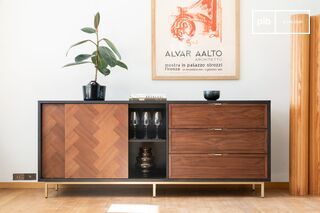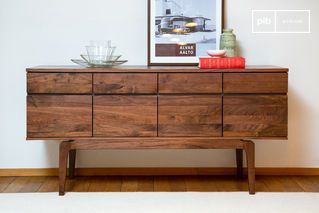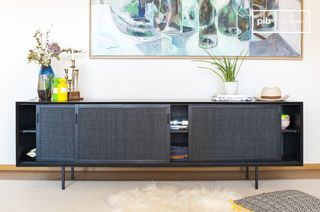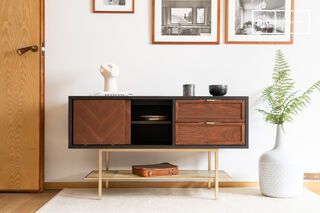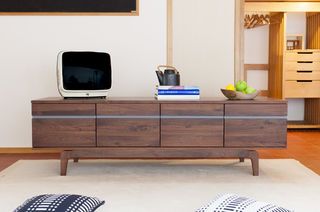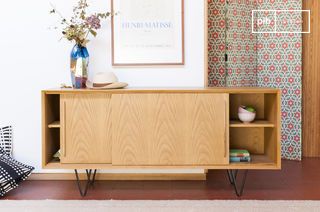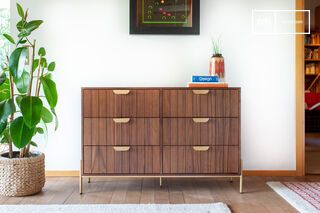Modern sideboards
Modern sideboards feature clean lines, uncluttered volumes and clear functions. Mixed materials, smooth finishes, geometric rhythms: each element is defined by its relationship to the wall plane. The format can be suspended, free-standing or in direct contact with the floor. A modern sideboard fits into spaces where formal neutrality and visual continuity are desired. This category includes pieces designed to organize space without overload or disruption.
read more >Filters
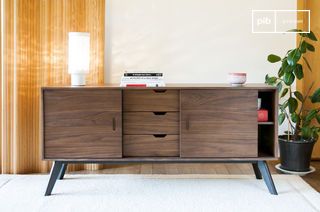
Walnut buffetHinda
£1315
10 festive days
10% off our tables and consoles
Welcome your guests in style · Limited stock
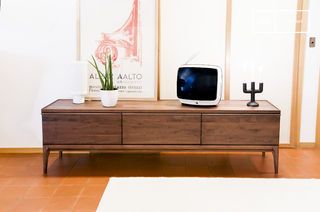
Walnut TV standHemët
£1925

Defining the characteristics of a modern sideboard
A modern sideboard is characterized by continuous lines, a lack of ornamentation and a functional organization focused on everyday use. It offers storage divided into closed modules, sometimes accompanied by open niches or sliding volumes. The "modern buffet" category covers pieces with a controlled formal expression that can be integrated into sober or contemporary interiors. The aim is not to attract attention, but to structure a wall with a coherent volume, often reduced to its bare essentials. Handleless opening, invisible hinges or aligned modules reinforce this logic.
Materials used and visual rendering
Modern sideboards use homogeneous or contrasting materials. You'll find lacquered MDF, straight-grained veneered wood, painted metal or fine ceramics. The choice of matte, satin or gloss finishes determines the perception of the surface and its interaction with light. Colors are generally neutral (white, black, gray, beige), but some models incorporate bold hues as accents. The base, often in metal or solid wood, can be concealed or, on the contrary, serve as a visual landmark by emphasizing the base. Some models are suspended to lighten the ensemble and clear the floor.
Integration into the layout and design logic
A modern sideboard finds its place in a living room, office or hallway. In a living room, it can structure the area opposite sofa space, or accompany a dining area. In a workspace, it offers discreet storage capacity for documents or technical objects. Its position depends on circulation, light and dialogue with other fixed volumes. The modern sideboard can also help organize an open space by defining a transition between two functions, without using a partition.
Choosing a modern sideboard means favoring a legible piece of furniture, whose form derives from its use. It is part of a clear planning logic, where elements are selected for their formal coherence and their ability to integrate without overloading.
A modern sideboard is a clear choice, with a form that follows its use

